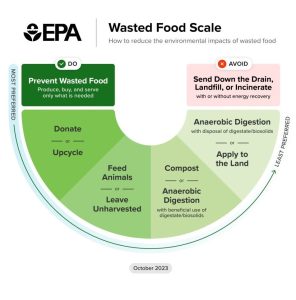Consumers and Brands Can and Should Do Their Part to Reduce Food Waste

Food waste is an environmental, social and economic problem. Wasted food destined for landfills generates harmful greenhouse gas emissions, is a serious social problem as many people across the nation suffer from food insecurity and is a practice that wastes money.

Source: EPA
Even as edible food is thrown away, many people go hungry. Data from the U.S. Department of Agriculture (USDA) revealed that 12.8% (17.0 million) of U.S. households were food insecure at some time during 2022. That means at times during the year, these households were uncertain of having or unable to acquire enough food to meet the needs of all their members because they had insufficient money or other resources for food.
Food waste is also a tremendous waste of money. The average household of four people wastes almost $2,760 per year on food that goes uneaten. In total, consumer food waste accounts for more than 48% of surplus food in the U.S. at a cost of $229 billion.
While there is no doubt that food waste is a massive problem, there are strategies consumers and brands can adopt to address this problem.
Consumers can play a vital role in cutting down on food waste by following simple practices such as being a more mindful shopper and only buying what is needed, properly storing leftovers for maximum freshness and serving smaller portions. Creating meal plans, composting leftovers, buying “ugly” (misshapen) produce, and using vegetables past their prime in soups and casseroles are other ways consumers can avoid throwing edible food away.
Brands can help tackle the challenge of food waste through their packaging.
High quality packaging protects food from damage and spoilage all along the supply chain from food manufacturer to store shelves to consumer pantries. This product protection increases the shelf life of food, which plays an important role in reducing food waste. So, too, does resealable packaging. Packaging that is re-closable and resealable allows consumers to portion out only the amount they want to consume and safely store the rest for later.
Choosing the right packaging can help brands do their part to reduce food waste. A software designed packaging solution, the EEASY Lid is the re-closable, sustainable packaging solution brands need to protect products while mitigating both food and packaging waste.
Consumers and brands can and should take action now to help reduce food waste.
Contact us today to learn more!